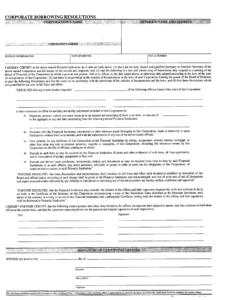Implementing an employee referral program can be an effective way to attract top talent and strengthen your company culture. A well-structured program creates a positive employer brand, encourages employees to actively participate in the hiring process, and fosters a culture of collaboration and teamwork within the organization. To ensure the success of your program, it is crucial to have a clearly defined employee referral program policy template in place.
This comprehensive document outlines the guidelines, procedures, and expectations associated with the program, ensuring transparency and fairness throughout the process. It serves as a guide for both employees and hiring managers, providing a structured framework for managing referrals and evaluating candidates. An effective employee referral program policy template typically includes the following key elements:
Eligibility Criteria and Guidelines
Who Can Participate?
Clearly define who is eligible to participate in the program. This may include all full-time, part-time, and contract employees, as well as former employees who are still actively involved with the company.
Types of Referrals Accepted
Specify the types of referrals that are accepted under the program. This may include referrals for open positions within the company, as well as referrals for positions that may not yet be advertised.
Submission Process and Documentation
Outline the process for submitting referrals, including the required documentation and information that employees need to provide about the referred candidate.
Incentives and Rewards
Clearly communicate the incentives or rewards offered to employees for successful referrals. This can include cash bonuses, gift cards, additional paid time off, or recognition through company-wide announcements.
Evaluation and Selection Process
Initial Screening
Describe the initial screening process for referred candidates, including who is responsible for reviewing the submissions and the criteria used to evaluate candidates.
Interviews and Reference Checks
Outline the interview process for referred candidates, including the number of interviews, who will conduct the interviews, and the types of questions that will be asked. Also, mention the process for conducting reference checks and verifying the candidate’s qualifications.
Hiring and Onboarding
Specify the process for hiring referred candidates, including the approval process, offer letter, and onboarding procedures.
Performance Evaluation and Follow-Up
Describe the process for evaluating the performance of referred employees and conducting follow-up checks to assess the effectiveness of the referral program.
Conclusion
An employee referral program policy template is a valuable tool that helps organizations establish a structured and effective referral program. By clearly defining the guidelines, procedures, and expectations, companies can ensure that the program is implemented consistently and fairly, while also fostering a culture of employee engagement and collaboration. A well-crafted policy template sets the stage for a successful program that attracts top talent, strengthens the employer brand, and ultimately contributes to the growth and success of the organization.
Regularly reviewing and updating the policy template is essential to ensure that it aligns with changing business needs, industry trends, and legal requirements. By continuously improving the program, companies can maximize its impact on talent acquisition and retention efforts.
FAQ
What are the key benefits of implementing an employee referral program?
An employee referral program offers numerous benefits, including attracting top talent, strengthening the employer brand, fostering a culture of collaboration, and increasing employee engagement. It also provides a cost-effective and efficient way to fill open positions quickly and effectively.
How can companies ensure the fairness and transparency of their employee referral program?
To ensure fairness and transparency, companies should clearly define the eligibility criteria, submission process, and evaluation criteria in the employee referral program policy template. They should also provide equal opportunities for all employees to participate in the program and communicate the program guidelines effectively to all employees.
How can companies measure the success of their employee referral program?
To measure the success of an employee referral program, companies can track key metrics such as the number of referrals received, the quality of referred candidates, the hiring rate of referred candidates, and the retention rate of referred employees. Regular reviews and feedback collection from employees and hiring managers can also provide valuable insights into the program’s effectiveness.
